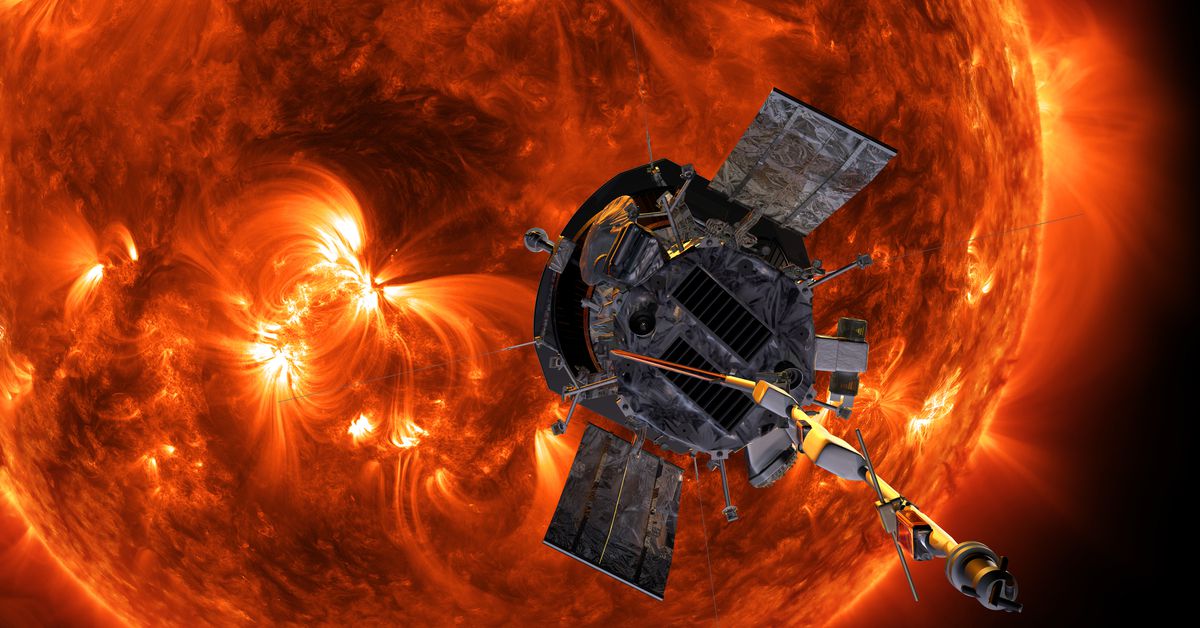NASA’s Parker Solar Probe Successfully Completes Closest-Ever Flyby of the Sun
In a groundbreaking achievement, NASA’s Parker Solar Probe has successfully completed its closest approach to the Sun, marking a new milestone in space exploration. On December 26th, the probe transmitted a signal back to Earth, indicating that it is operating normally and in good health.
A Historic Achievement
The Parker Solar Probe has made history by becoming the closest human-made object to have approached the Sun, with an incredible distance of just 3.8 million miles from the solar surface. This remarkable feat was accomplished on December 24th, when the probe flew at a blistering speed of 430,000 miles per hour past the solar surface.
Mission Objectives
The Parker Solar Probe is designed to study the Sun’s corona, which is the outer atmosphere surrounding the star. Scientists are particularly interested in understanding why the corona gets so hot, despite being far removed from the Sun’s surface. To achieve this goal, the probe will make a total of 24 close approaches to the Sun over its planned seven-year mission.
The Close Flyby
During the close flyby on December 24th, mission operations were out of contact with the probe for several hours due to the intense radiation and heat generated by the Sun. However, as soon as the signal was reestablished, NASA confirmed that the probe had survived the encounter and was transmitting data back to Earth.
The Parker Solar Probe: A Brief History
Launched in 2018 by NASA and Johns Hopkins Applied Physics Laboratory, the Parker Solar Probe is a state-of-the-art spacecraft designed to withstand the harsh conditions of the Sun’s corona. Equipped with a Sun-facing heat shield that reaches temperatures of up to 2,500 degrees Fahrenheit, the probe itself remains at a relatively cool temperature of just 85 degrees Fahrenheit.
Understanding the Sun’s Mysteries
The Parker Solar Probe is expected to provide valuable insights into several key areas of solar physics. By studying the solar wind, scientists hope to gain a better understanding of how energetic particles are accelerated to near light speed. Additionally, the probe will collect data on the Sun’s heat and radiation patterns, shedding new light on the mysteries of the corona.
What’s Next?
Now that NASA has confirmed the mission’s success, the Parker Solar Probe is expected to send back detailed telemetry data on its status on January 1st. This will provide scientists with a wealth of information on the probe’s performance and any challenges it may have faced during the close flyby.
The Future of Space Exploration
The Parker Solar Probe’s historic journey to the Sun marks an important milestone in space exploration, demonstrating our ability to design and build spacecraft that can withstand extreme conditions. As we continue to push the boundaries of what is possible, the Parker Solar Probe serves as a testament to human ingenuity and the power of scientific inquiry.
Conclusion
The Parker Solar Probe’s successful close flyby has opened up new avenues for research into the mysteries of the Sun. By studying the solar wind, heat, and radiation patterns, scientists hope to gain a deeper understanding of our star and its impact on the solar system. As we look to the future, the Parker Solar Probe serves as a shining example of what can be achieved through determination, ingenuity, and a passion for discovery.
Appendix
- Mission Objectives: The Parker Solar Probe is designed to study the Sun’s corona, which is the outer atmosphere surrounding the star. Scientists are particularly interested in understanding why the corona gets so hot, despite being far removed from the Sun’s surface.
- The Close Flyby: During the close flyby on December 24th, mission operations were out of contact with the probe for several hours due to the intense radiation and heat generated by the Sun.
- The Parker Solar Probe: A Brief History: Launched in 2018 by NASA and Johns Hopkins Applied Physics Laboratory, the Parker Solar Probe is a state-of-the-art spacecraft designed to withstand the harsh conditions of the Sun’s corona.



